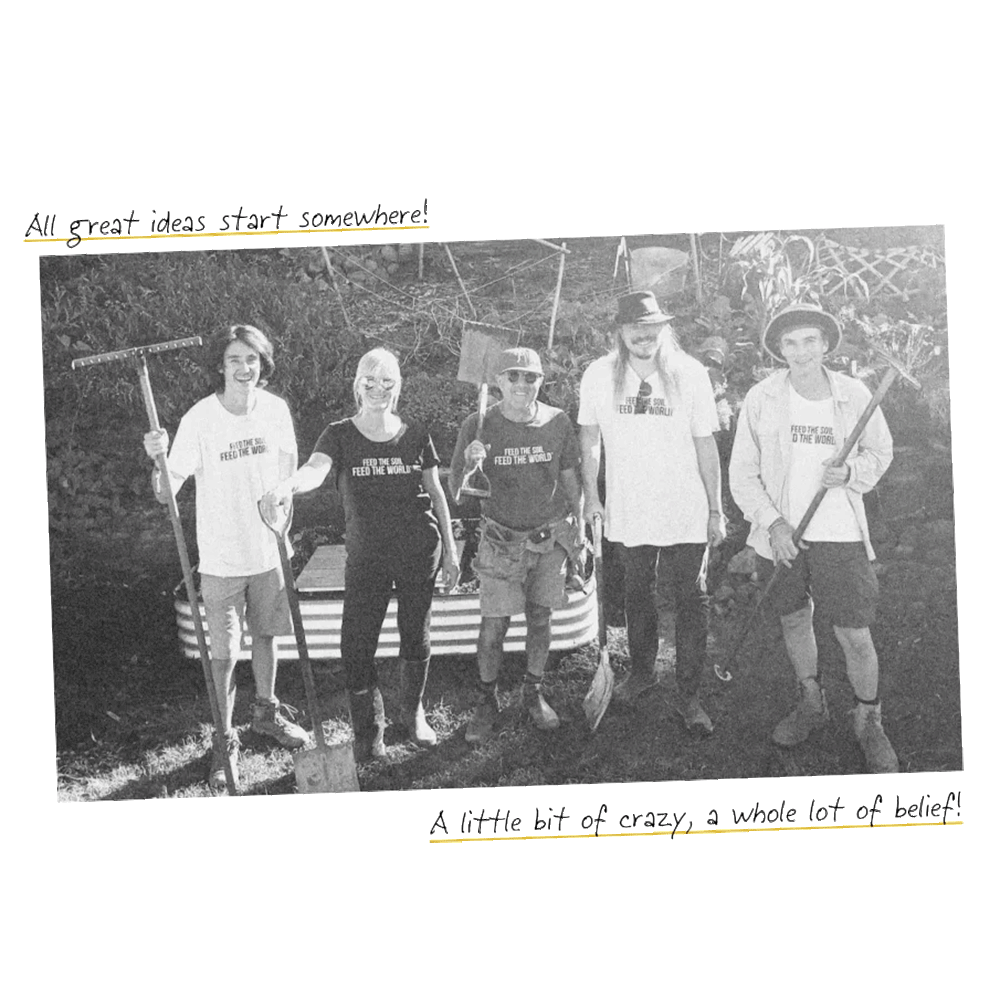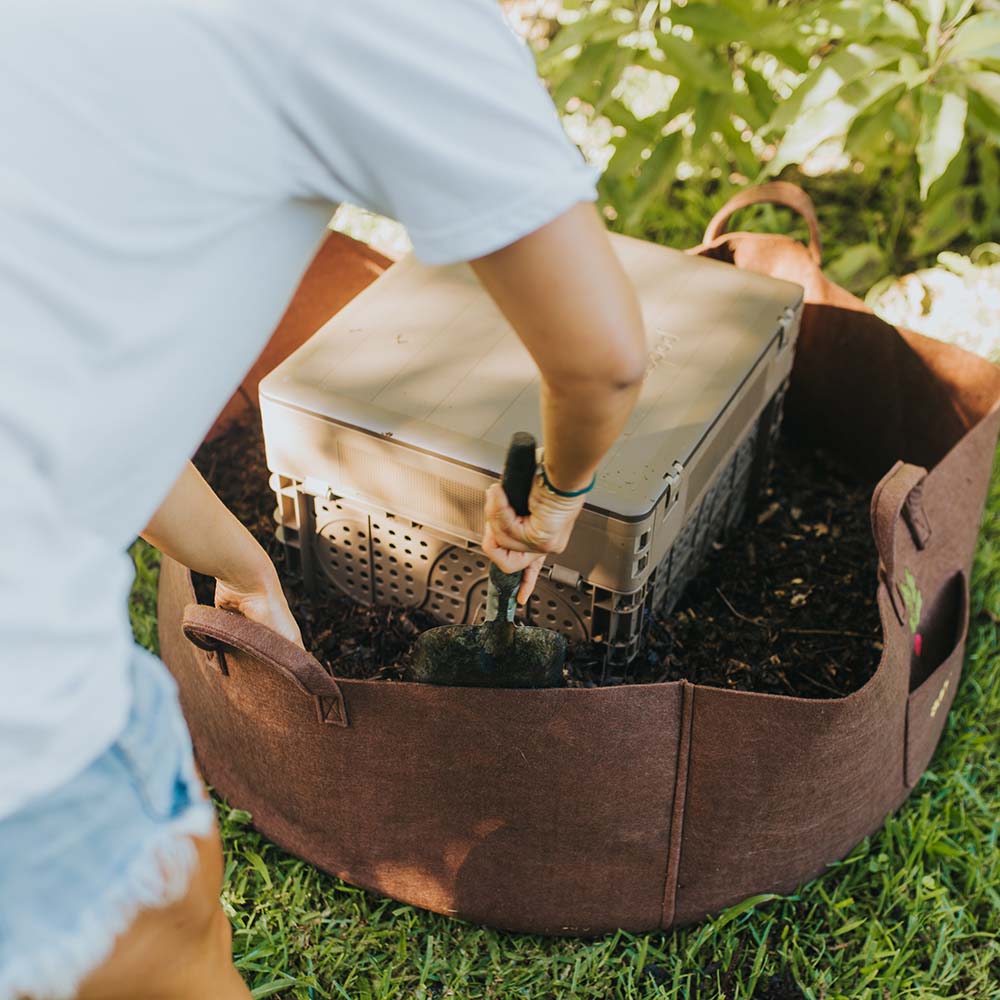Subpod is an in-ground compost system and worm farm. Compost worms and microbes live inside Subpod and turn all the materials you feed them (food scraps, paper, coconut peat) into rich compost. Over time, nutrients from the compost will feed your garden soil and help your plants thrive.
Compost Underground
Compost worms live in Subpod like they would in nature. Underground, they compost in the dark, protected from harsh weather conditions and direct sunlight. Fresh air circulates through Subpod via the ventilation panels, which helps aerobic (odourless) microbes speed up the composting process. As the worms and microbes breed, they explore the soil, taking particles of compost with
them and boosting fertility through the garden bed.
Soil is an insulator, it protects the worms in hot weather and gives them a cool place to escape to. When it's cold, the soil traps heat in Subpod and keeps the worms active during winter – so you can compost all year round.
Subpod in 4 Simple Steps
Step 1: Put your food waste in Subpod and aerate your compost to speed up the
next step.
Step 2: Worms and microbes go to work, breaking down your food waste into worm castings (compost).
Step 3: Ventilation and aeration keep your system smell-free while the composting process happens.
Step 4: You can harvest your compost and use it as
fresh organic fertiliser for
your plants!
Subpod is a vermicomposting system
Vermicomposting
Uses worms to break down food waste much faster than traditional methods, generally in 2 - 3 months. Vermicompost (worm castings or worm manure) is nitrogen rich compost that’s as good for the garden as the traditional stuff. Systems like Subpod can compost smaller amounts of waste non-stop, which is a big advantage over traditional systems.
Traditional composting
A complex biological process that uses a microbes, a specific ratio of carbon to nitrogen and high temperatures. It requires a large pile of organic matter to generate the high temperatures needed to compost the food waste. This can take a lot longer, up to 6 - 9 months, and systems are often exposed, attracting pests and emitting foul smells.
Subpod is an aerobic system, which means odourless microbes boost the composting process, not smelly anaerobic ones. The unique 360 ventilation below Subpods’ lid keeps fresh air cycling through your system. With weekly aeration, your compost will only ever smell like a forest floor.
Understanding Worms and Microbes
Hidden under our feet is a world of wonders. Worms and microbes can seem daunting to
new vermicomposters – but they're easy to get the hang of.
Worms
There are seven species of worms that work in Subpod. We recommend starting out with red wiggler worms, but having 2 - 3 varieties make your system more robust. Some worms thrive where others struggle, or prefer different food types, so having a good mix will set you up for success!
We've written a few articles to help you get acquainted with compost worms – browse them below:
Where to Buy Compost Worms
Everything You Need to Know About Compost Worms
Microbes
Microbes are everywhere. They make us healthy, sick and even happy! The ones you want in your Subpod are aerobic – odourless microbes that thrive in well oxygenated environments and speed up composting. You don't need to buy them though, just maintain your Subpod and they'll come to you.
We've recorded a few podcast episodes that simplify microbes, soil and worms:
The Secret World of Microbes
Compost 101: Everything You Need to Know About Compost
The Subpod Buyers Guide has been created to help you find the perfect composting solution for you. Select which options best suit your needs and at the end you will be given the best option for your home.



